Estanco de Naipes del Perú
In October 1888 the Republic of Peru Congress passed Law no.26 establishing taxes on playing cards, whether imported or locally produced, according to the quality of the cards.
Established in 1781 by the Spanish government to control the sale of playing cards in the American colonies, the purpose was to administer the importation of playing cards from Spain. Packs had secret markings to facilitate the detection of fraud, and a hierarchy of uniformed officials controlled operations. At some point this was superseded by Peruvian laws when it became a state monopoly garnering revenues for the national treasury.
In October 1888 the Republic of Peru Congress passed Law no.26 establishing taxes on playing cards, whether imported or locally produced, according to the quality of the cards:
-
imported 'ordinary' cards, 2 centavos per pack;
-
imported semi-fine and children's packs, 4 centavos per pack;
-
imported high quality packs (including English & French packs), 8 centavos per pack.
-
Packs manufactured in Peru, 2 centavos per pack. The law does not state how the payment of the taxes was controlled.
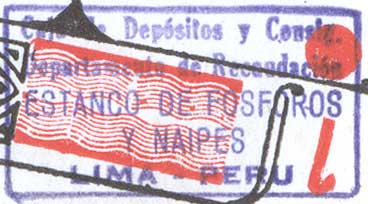 The Estanco de Naipes appears to have been
preceded by the Government's Caja de Depósitos y Consignas, Departamento
de Recaudación, Estanco de Fósforos y Naipes
- but further details are not currently available.
The Estanco de Naipes appears to have been
preceded by the Government's Caja de Depósitos y Consignas, Departamento
de Recaudación, Estanco de Fósforos y Naipes
- but further details are not currently available.
In Law no.4936 (Item 'G', Jan. 1924) The Estanco de los Naipes was created.

Above: Peruvian "Estanco de Naipes" tax band which was presumably wrapped around the outside of each pack (1924-67). The printer's name, which can be read at the lower right-hand end of the tax band, is: Lit. T. Scheunch, Lima.
Whilst local playing card production in Perú was sparse, foreign manufacturers supplied playing cards specially for the Estanco de Naipes del Perú. The logo of the Estanco de Naipes usually appears on the reverse of the cards, whilst special text appears overprinted on the box, ace of spades or joker:
'Aladdin 1001' and Caravan playing cards were manufactured by U.S.P.C.C.►
'Bosco' playing cards were manufactured by ASS (Germany)►
De Luxe Bridge playing cards manufactured by Ferd. Piatnik & Sons (Vienna)►
'El Caballo' Spanish playing cards manufactured by Fournier (Spain)►
'TOYO Playing Card' manufactured in China.
Anonymous 'M' Spanish-suited playing cards►
Playing card brands manufactured in Japan►
Tobacco advertising playing cards by Van Genechten (Belgium)►
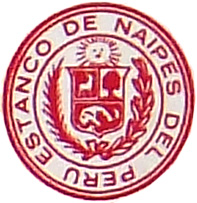
In Law no.16754 (Nov. 1967) the Estanco de los Naipes was abolished and a duty on imported playing cards imposed according to their quality:
Playing cards made from cardboard, 5.00 soles per pack;
Plastic playing cards, 50.00 soles per pack.
Home produced playing cards continued to be taxed according to established national laws.
By Simon Wintle
Spain • Member since February 01, 1996 • Contact
I am the founder of The World of Playing Cards (est. 1996), a website dedicated to the history, artistry and cultural significance of playing cards and tarot. Over the years I have researched various areas of the subject, acquired and traded collections and contributed as a committee member of the IPCS and graphics editor of The Playing-Card journal. Having lived in Chile, England, Wales, and now Spain, these experiences have shaped my work and passion for playing cards. Amongst my achievements is producing a limited-edition replica of a 17th-century English pack using woodblocks and stencils—a labour of love. Today, the World of Playing Cards is a global collaborative project, with my son Adam serving as the technical driving force behind its development. His innovative efforts have helped shape the site into the thriving hub it is today. You are warmly invited to become a contributor and share your enthusiasm.

Leave a Reply
Your Name
Just nowRelated Articles

73: Fakes, forgeries and Tax Evasion
When there are oficial taxes to pay, people will find a way to avoid paying them - often illegally. ...
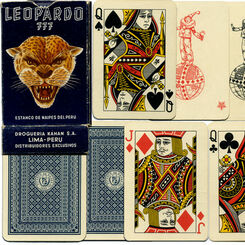
Leopardo 777 made in Japan for Peru
Leopardo 777 playing cards manufactured in Japan for the Estanco de Naipes del Peru, 1960s.

Bosco by A.S.S. for the Estanco de Naipes del Peru
‘Bosco’ Playing Cards manufactured by A.S.S. for the Estanco de Naipes del Peru, 1930s.

Tax on Spanish Playing Cards
Taxation on Spanish playing cards, the monopolies and smuggling.

History of Blackjack
Over the years the origin of Blackjack, like many other games, has eluded researchers for a long tim...
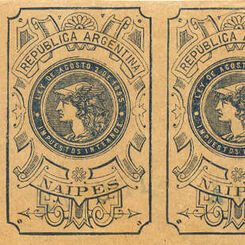
Impuestos Internos Sobre Naipes
Duty was first introduced on playing cards in Argentina in 1892, as part of the Internal Duties law,...

Argentina Tax Stamps on playing cards 1895-1968
Argentina Tax Stamps on playing cards 1895-1968

Cards for export to Peru by Heraclio Fournier
'El Caballo' brand (No.5P) playing-cards manufactured in Spain by Heraclio Fournier S.A. especially ...
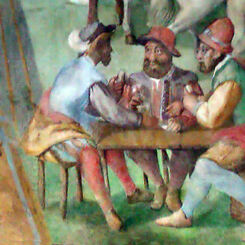
Italian Playing Cards
The first reliable evidence that playing cards were being used in Italy is from 1376, when a game ca...
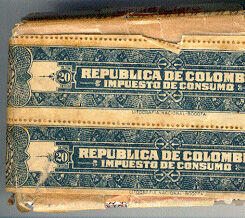
Impuesto de Timbre para Naipes
EL CONGRESO DE COLOMBIA. LEY 69 DE 1946, por la cual se elevan las tarifas de algunos impuestos indi...

History of English Playing Cards & Games
The History of English Playing Cards dates probably from the mid 15th century

Naipe Peruano
Peruvian costumes playing cards.
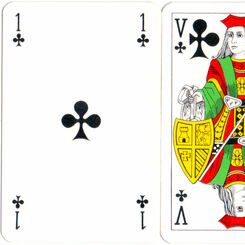
Biermans for the Estanco de Naipes del Peru
Standard Genoese pattern with French indices made by Biermans for Cigarrillo Holiday and the Estanco...
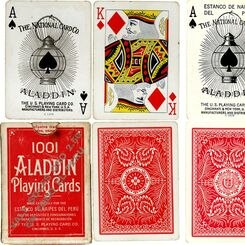
Playing Cards manufactured by The US Playing Card Co for the Estanco de Naipes del Peru
Playing cards manufactured by The US Playing Card Co for the Estanco de Naipes del Peru, 1920s - 195...

Toyo playing cards No.88 for Peru
Toyo playing cards No.88 manufactured in China for the “Estanco de Naipes del Perú”, 1950s.
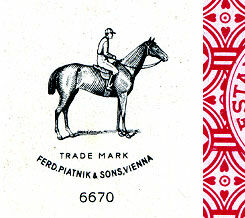
Piatnik & Sons for the“Estanco de Naipes del Perú”
Playing Cards made by Piatnik & Sons for the“Estanco de Naipes del Perú”, c.1960.

16th century cards discovered in Peru
Fragments of playing cards and 2 dice were unearthed in a 16th century rubbish tip adjace...

El Reloj card game by Imprenta Lecaros
“El Reloj” card game by Imprenta Lecaros, Lima, Peru, c.1920.
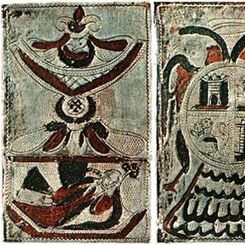
Silver Cards from Peru
Spanish-suited silver cards, richly embellished and enamelled, from a former Spanish Viceroy in Peru...

Spanish-suited deck for the Estanco de Naipes del Perú
Spanish-suited playing cards printed for the Estanco de Naipes del Perú.
Most Popular
Our top articles from the past 60 days


 Your comment here. Your comment here. Your comment here. Your comment here. Your comment here. Your comment here. Your comment here. Your comment here. Your comment here. Your comment here. Your comment here. Your comment here. Your comment here. Your comment here. Your comment here. Your comment here. Your comment here. Your comment here. Your comment here. Your comment here. Your comment here. Your comment here. Your comment here. Your comment here. Your comment here. Your comment here. Your comment here. Your comment here. Your comment here. Your comment here. Your comment here. Your comment here.
Your comment here. Your comment here. Your comment here. Your comment here. Your comment here. Your comment here. Your comment here. Your comment here. Your comment here. Your comment here. Your comment here. Your comment here. Your comment here. Your comment here. Your comment here. Your comment here. Your comment here. Your comment here. Your comment here. Your comment here. Your comment here. Your comment here. Your comment here. Your comment here. Your comment here. Your comment here. Your comment here. Your comment here. Your comment here. Your comment here. Your comment here. Your comment here.




















